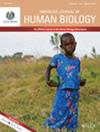Trajectory Analysis of the Four-Year Changes in Body Composition and Bone Mineral Characteristics Among Highly Competitive Male University Long-Distance Runners
Abstract
Objectives
This study examined long-term changes in body composition and bone mineral characteristics among male long-distance runners from a high-profile university team, focusing on concerns about impaired musculoskeletal development due to extreme leanness and weight management practices in this population.
Methods
Trajectory analyses were performed using multilevel modeling of 608 dual-energy x-ray absorptiometry datasets from 109 runners (mean age, height, and weight of 18.0 years, 171.4 cm, and 56.8 kg at baseline, respectively) collected biannually over 4 years.
Results
Linear increases in total and regional lean mass (LM) were observed on average, with the increase in leg LM being double that of arm LM (0.07 vs. 0.03 kg per occasion, respectively). Similarly, total bone mineral density (BMD) and content (BMC) exhibited linear growth on average, with BMD accrual being greater in the legs than in the arms (0.004 vs. 0.001 g/cm2 per occasion, respectively). However, rib BMD and BMC were predicted to decrease. Individually predicted growth rates in total LM were significantly associated with those in total BMD (r = 0.347, p < 0.001) and BMC (r = 0.424, p < 0.001).
Conclusions
These results indicate site-specific musculoskeletal adaptations to intensive long-distance running training. Moreover, a random slope model accurately captured the trajectories of most dependent variables, highlighting the heterogeneity of training responses. The predictive models developed in this study offer practical strategies for identifying runners at risk of suboptimal physical development, thereby facilitating the development of personalized conditioning programs.

 求助内容:
求助内容: 应助结果提醒方式:
应助结果提醒方式:


